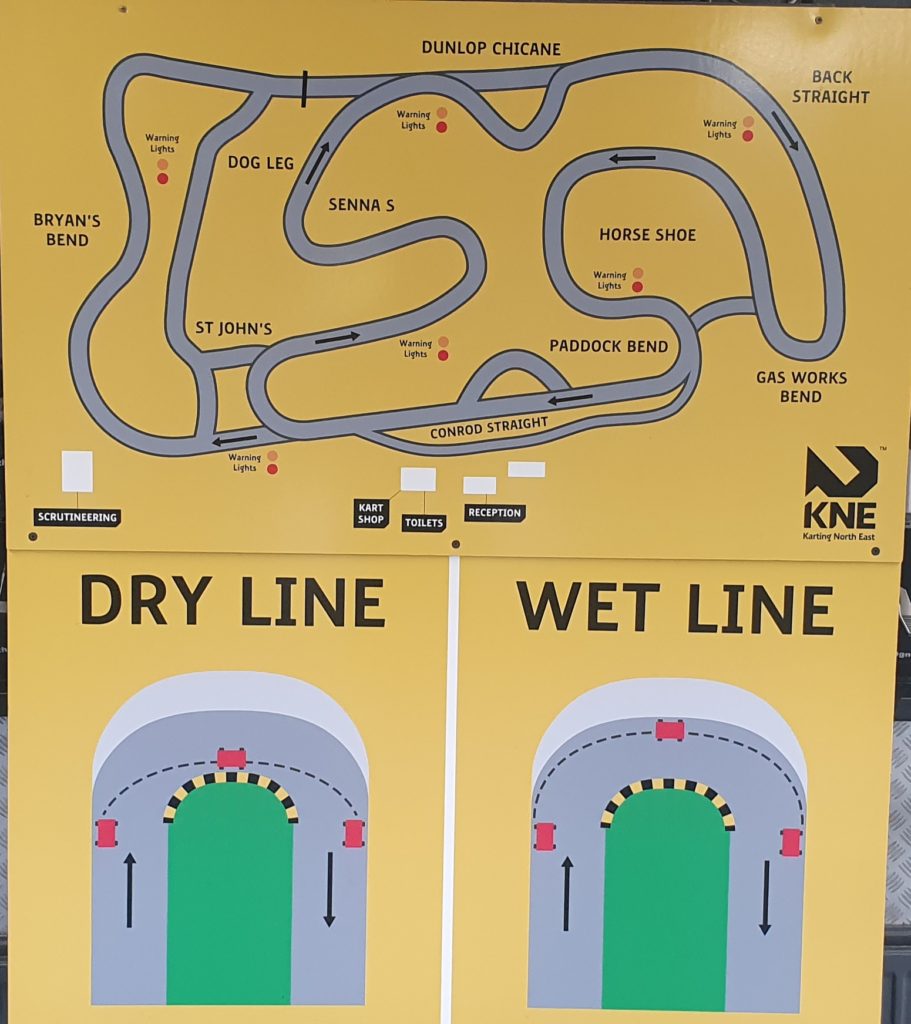Importance of Racing Lines

Lesson three of our Junior Karting Lessons looked at the importance of using the correct line along with entry & exit speed.
The racing line is the route a racing driver follows to take corners in the fastest possible way. By using all of the available space on the track, karts can travel in a straighter line and travel faster before reaching the limits of grip. Determining the best line is an essential skill to master for both timed sessions and racing events.
Taking your time to learn corners enables you to find the correct line rather than “rushing” the corner and spending the mid corner correcting excessive speed and poor entry & apex.
Depending on the shape of the circuit will determine your lines, however four main terms will always apply
- Braking Point
- Turn in Point
- Apex or Clipping Point
- Exit Point

Braking point – The Braking point is simply the point when you should apply the brakes to slow the kart enough so you can lift off the brakes at point of turn in.
Turn in point – At this stage of the corner you should be releasing the brake and starting to turn, looking ahead to your apex. Turn in too late and you’ll scrub off speed, turn in too early and you will compromise exit speed.
Apex/Clipping Point – The point when you are at the inside of the corner. Quite often the circuit will have kerbs to protect the circuit edge, although clipping these will throw the kart wide or worse… break your kart!!
Exit Point – From the apex, and sometimes before, you should be looking ahead to the exit point and reapplying the throttle. The exit point is achieved by slowly opening up the steering lock and aiming for the outside of the corner. Make sure you use all of the track and run right to the edge, but again, be aware of the kerbs and any run off. Using these can unsettle the kart and earn you a warning from the Race Director for exceeding track limits.
The best way to learn the correct lines and reduce laps times is to “start slow to get quick”! Whilst sliding out of a corner may look impressive and feel quick, in reality all that sliding is scrubbing off speed and effecting your straight line momentum to the next corner.
Wet Lines – When driving a kart on slicks in the rain, everything changes when it come to racing lines. Grip is significantly reduced so speed naturally also has to reduce. One of the biggest losses of time on track is spinning, so no matter how fast you think you are going, a spin will always loose more time than taking it easy. Below are some tips to help you when the heavens open
- Avoid the racing line! – In the wet the line differs due to the rubber embedded on the track from dry running. By running off line and around the outside of the track the grip increases.
- Be Positive but SMOOTH – The smoother you can driver and input less into the controls, the better the kart will react and stay pointing in the right direction.
- Stay calm and be patient. – As mentioned above regardless of how slow you go, you will always be faster than some one pointing the wrong way or in the barriers!!!!!

Learning the correct lines around a circuit will come with time and practice, but being patient will be faster in the long run.